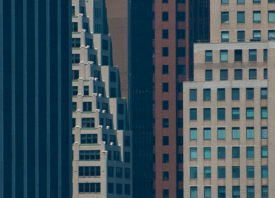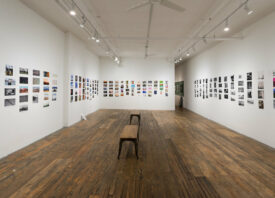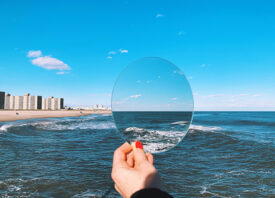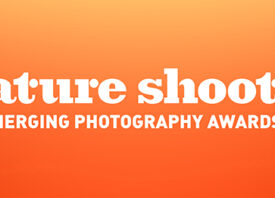Search this site
Gallerist Michael Foley on the Value of a Master’s Degree (Sponsored)

© Katrin Eismann
As the owner of Foley Gallery in the Lower East Side of Manhattan, Michael Foley has curated his numerous exhibitions, but there’s one show that always surprises him: the thesis exhibition for the Master of Professional Studies in Digital Photography program at New York City’s School of Visual Arts.
This time around, he worked with 24 graduates to create Sight Seen, an exhibition of photographic works, including still images, manipulated pictures, virtual realities, and even a brand new photography magazine. The project presented are by turns deeply personal, thought-provoking, and aesthetically meticulous. All speak to the potency of an emerging generation of digital photographers who aren’t afraid to push the medium into unheralded directions.
Along with co-founding the Exhibition Lab, where he hosts small classes inside the gallery, Foley has been a part of the MPS program at SVA for years; what he’s learned in the classroom has directly fed into his eye as a curator and vice versa. Under the mentorship of industry insiders like Foley and his colleagues, students at SVA are pushed to be the best in the business; after an intense and career-changing year (two for part-time online students), they graduate and go on to build lives and names for themselves in the fine art and commercial sectors alike.
We asked Foley to tell us a bit about his career, his passion for teaching, and what his position at SVA has taught him about where photography is headed.

Installation by Clay Patrick McBride, SVA Digital Photography class of 2013.
Photo by Jane Kratochvil
Before you opened your own gallery, you worked for other leading galleries. What inspired you to set out on your own? What role does Foley Gallery take in the NYC art scene? What gaps does it fill?
“Late in 2003, I decided that I would either go back to making art or open a gallery. It had been nearly fourteen years of working with some great galleries in New York and San Francisco. I started as an artist, so I wanted to check in to see if I still had an interest in that. While I worked at Yancey Richardson, I was moonlighting as a bar back at the club Irving Plaza to see what life might be like working nights and making art by day. Well, after getting hit in the head with a gin bottle and lugging cases of beer, I was done. I decided on opening a gallery… if I could qualify for a loan. I did, and here I am twelve years later.
“I started the gallery showing only photography. That’s what I knew, and that’s what people know me for. But in the second year, I added collage and drawing. Since then, I’ve shown it all, from sculpture to video. Here still is an emphasis on photography and arts in a graphic or narrative style. My mission is really to connect the dots between different media. I am like the United Nations in the art world in that I show artists that speak with different languages while I trying to find the common connections between them all.
“In addition, I am singularly focused on developing careers of artists newer to exhibiting. That said, I have several artists that I’ve shown three times or more, but I am continually looking for new talent and adding to my roster.”

Photo by Wyatt Gallery
What are you looking for in a new artist for the gallery? What kinds of work excites you the most?
“Like my friend Mari Spirito once said, ‘I am looking for art that only that artist could make.’ In other words, original voices. I also look for work that commands attention through its aesthetics, but also has an underlying conceptual rigor so that there is so much more to discover about the work and the artist’s intentions.
“Personally, I am most excited by cut or manipulated paper, followed closely by work with excruciating detail.”
You’ve been in this business a long time. How did your job change with the rapid emergence of digital photography?
“In some ways, not at all. The technical aspect of capture and printing has always been changing from day one; however, I do need to keep up with all of the new tools so I can really discuss the work fully. With the advent of digital, it has been super easy to have work printed in a consistent way and so much easier logistically. The key for the artist is to still seek out a printing ‘style.’ When digital printing first arrived, I felt that from artist to artist, prints were looking too much the same.”
How did you get involved in the Master of Professional Studies in Digital Photography program as SVA?
“I wish I could remember! I have been teaching in the BFA program for about a dozen years, along with several years teaching in the summer residency program there. I might have come in for a guest crit or talk. Katrin Eismann was developing the program and was looking for someone that could be a bridge of knowledge to the professional gallery and art world. It’s been an amazing journey, and every year there is always a nice new adjustment or two.”
What’s the most inspiring moment you’ve had during your time teaching? An exchange with a student that really got you thinking?
“One of the most inspiring series of moments is teaching a short course in the history of contemporary photography, basically post-Robert Frank. The MPS program attracts a diverse group of students, not only in their culture and age, but also in their degree of knowledge of the medium’s history. You may be passionate about photography, but that doesn’t mean you know anything about its history, especially since the medium has become so popular and accessible lately.
“So, during my first class, I have everyone stand and I call off some pretty well known photographers. If they don’t know what their work looks like, they have to sit down. I start with Ansel Adams and then move on down the line to some obscure talents. It always amazes me how some students don’t know some of what I consider the pillars of the medium. But, that doesn’t get me depressed; it gets me excited! That I will be the one turning them on to this list of yet undiscovered masters of the medium!
“Individually, there have been some stunning exchanges. Artists can be stubborn, but I love seeing that slow light of understanding come on when they really reflect on their work and what’s working and what isn’t.”
Has your teaching position influenced how you curate and understand your work as a gallerists?
“I think I have a deeper sense of empathy for their creative process and journey. I started as an artist, so I can see them in that place. But I have also been to the other side, the place where many artists want to inhabit. I am like a good double agent.”
You’ve lectured for the school’s renowned BFA and MPS programs in photography. What do you love about working with graduate students in particular?
“The graduate students teach me so much about their lives. They are seasoned in life, and I know that they really, really want to be there. The program is rigorous and not easy. A lot is expected, and they respond in kind. There are people older and younger than me. Some speak different languages, are from different cultures, and have such distinguished bits of knowledge in other fields. It’s great learning for me too. These are well-formed adults who have really sized up the importance of being there. That’s a thrill.”

Sight Seen

Sight Seen
Tell us about Sight Seen, the thesis exhibition you curated this year. You describe the work in this show as “strong-minded and fiercely independent.” Can you elaborate a bit on what this show means to you?
“Sight Seen is amazing. Every year is a challenge, like a big puzzle to put together. Only when you are putting together a typical jigsaw puzzle, you know how it is supposed to turn out! Even though are some strong individual voices, there were several themes that were present, so it really all came together. It’s a privilege to work with this group. There are always some surprises the day we install, since I have not seen the final work framed until that morning.”
What does a photography degree mean in this day and age? What do people learn in the classroom that they can’t learn elsewhere?
“To me, the BFA, MFA or MPS has meant one thing clearly and strongly: commitment. Especially as you move up the academic ladder, it tells me that this is way beyond a general interest, a hobby. This is a call to action, to put yourself out there, be open to criticism and share some of your thoughts and feelings on life that are the most sacred to you. This is the opportunity to connect at a core creative place with peers and mentors. I suppose anyone can call themselves a photographer, since they have a camera in their back pocket, just like anyone can call themselves in art consultant in my business if they have a friend they can sell art to. But when you step up and commit your time and resources to photography, I will always take a second look. You are now part of my family. You speak my language, and I know we are going to get on just fine.”
“There is nothing like the bonds and camaraderie that can get created in this program. It’s a type of intense bootcamp where emotions can ran high and dreams can take you even higher. This all happens together in a well supported and encouraging environment. It’s an intense year, but one that is truly transformational for most because of these conditions.”
If your students take away one lesson from you after graduation, what do you hope that lesson is?
“Don’t make work for anyone else but yourself. In the end, the work you get hired to do, the gallery you show in, or the people that buy your work (besides your mother), are going to connect with you because you have a vision of life. You make the work that only you could make. You have a way of looking at life like no other.”
You come from a fine art background, but a lot of your students go on to excel in the commercial and editorial realm. What connections do you make between high art and the kinds of images we consume every day?
“Pictures, images, photographs, whatever you want to call them- they all have the ability to create impact. Each one will do it for different reasons and with different purposes in mind. A photograph may make you feel compassion for another, or it may incite you to buy a Budweiser. In either case, it’s been effective. It has served its purpose and the intention of the artist behind it. It becomes successful in its own way, and I am not going to judge which is better or more fulfilling. It amazes me that sometimes the intention of your image, whether that’s in the two broad categories of commercial or fine art, end up jumping over to the other side.”
You’re in the unique position of helping to shape the rising generation of photographers. What do you see for the industry’s future?
“A few years ago, I couldn’t really tell you. Photography seemed to keep on recycling old themes just with new people. It was a little sad. Of course, there is so much process-oriented work being made, and perhaps we have seen as end it that. There is a lot of repetition now. It is so wonderfully reductive, but I am not sure where else it can go. I hope I am surprised here.
“As an industry, it certainly changing as my little art world is changing. We will all have to be more enterprising. The channels and the keepers of the gates are all in flux. The locks are being changed, and everyone seems to be figuring it out as they go on.
“I often start my lectures about the gallery world to artists with, ‘You don’t need me any more.’ Well, I think you do, but not always for the same reasons. There is so much DIY now, between self-publishing, pop-up art shows, Instagram, it’s just more about assembling a series of outlets and revenue streams that work for you. I’ve had to do the same.
“In fact, as I speak, someone is paying me to have their wedding proposal here in the gallery. Not something I would have considered a couple of years ago, but now there are no rules. Be open to every opportunity. You not above anything when you are first starting out.”
Sight Seen
On view September 30-November 5
Reception October 19 6-8PM
SVA Chelsea Gallery
601 West 26th., 15th floor
NYC



